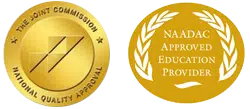Heroin is a type of opioid made from morphine that is derived from certain poppy plant seed pods. When sold on the streets, heroin resembles a brown or white powder. Dealers frequently cut heroin with powdered milk, sugar, quinine, or starch so they can make a larger profit.
If a cut of heroin is extremely pure, those using it can snort or smoke the drug. However, since most heroin sold on the streets is impure, those who use it stick to injecting it under their skin or into their veins. Generally, the darker heroin is, the less pure it is.
Effects of Heroin Abuse
Heroin produces its effects by binding to opioid receptors in your brain. These opioid receptors control how you feel pleasure and pain, so activating them results in a number of euphoric effects. The effects of heroin can also include:
- A flush that spreads over your skin.
- Dry mouth.
- Nausea and vomiting.
- Drifting in and out of consciousness.
- Itching.
- A heaviness in your legs and arms.
Continuing to use heroin over a long period of time results in additional harmful side effects. These might include:
- Liver and kidney disease.
- Chronic insomnia.
- Infections of the heart.
- Collapsed veins.
- Sexual dysfunction in men.
- Abscesses under the skin.
- Damaged tissue in the nose.
- Stomach cramping and constipation.
- Depression and antisocial personality disorder.
- Pneumonia.
Heroin Abuse Statistics
Heroin abuse continues to grow across the country, most likely because of the increase in prescription opioid addiction. Many people obtain a legitimate prescription for painkillers but end up becoming dependent on them, meaning they experience withdrawal symptoms if they stop taking them. The users also become tolerant, meaning the original doses they were given by the doctor no longer have any effect. Therefore, they turn to heroin for its greater potency. In fact, statistics show that 80 percent of people who abuse heroin started abusing prescription opioids first.
As of 2016, about 2.1 percent of people over the age of 26 had tried heroin sometime in their lives. Of those, 0.3 percent said they used heroin in the past year, while 0.2 percent said they used it in the past month.
Overall, heroin-related overdoses killed 15,469 people in 2016, making heroin one of the deadliest drugs in the country.
Drug Rehab for Heroin Abuse at Baystate Recovery Center
In heroin addiction treatment at Baystate Recovery Center, professionals use a combination of behavioral therapies and medications to curb your cravings and teach you the mental and emotional skills you need to stay sober.
Some of the behavioral therapies used for heroin addiction include:
- Cognitive-behavioral therapy, which teaches you to modify your drug-seeking behaviors and better manage your triggers to prevent relapse.
- Contingency management, which is when you receive rewards for remaining drug-free for a certain period of time.
Overall, heroin abuse doesn’t have to define your life.
Sources:
https://www.drugabuse.gov/
https://www.drugabuse.gov/
https://www.drugabuse.gov/
https://www.cdc.gov/
Baystate Recovery Center, a clinically Infused 12-Step Treatment Center for Drug and Alcohol Addiction, was founded by two partners in addiction treatment services, John Checchi and Michael Wilson.



